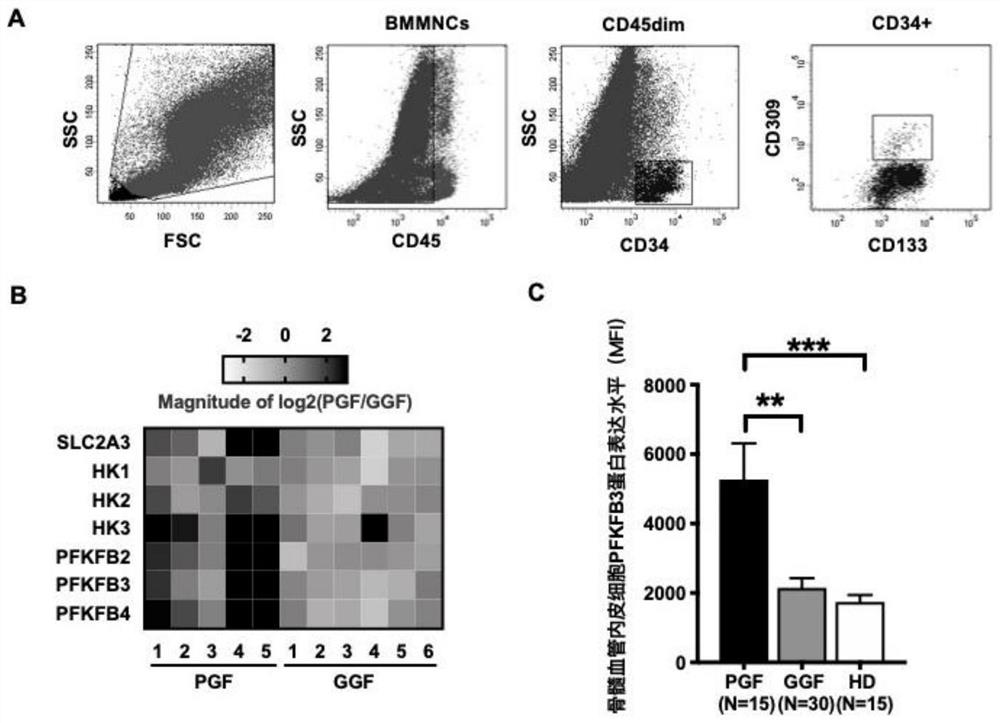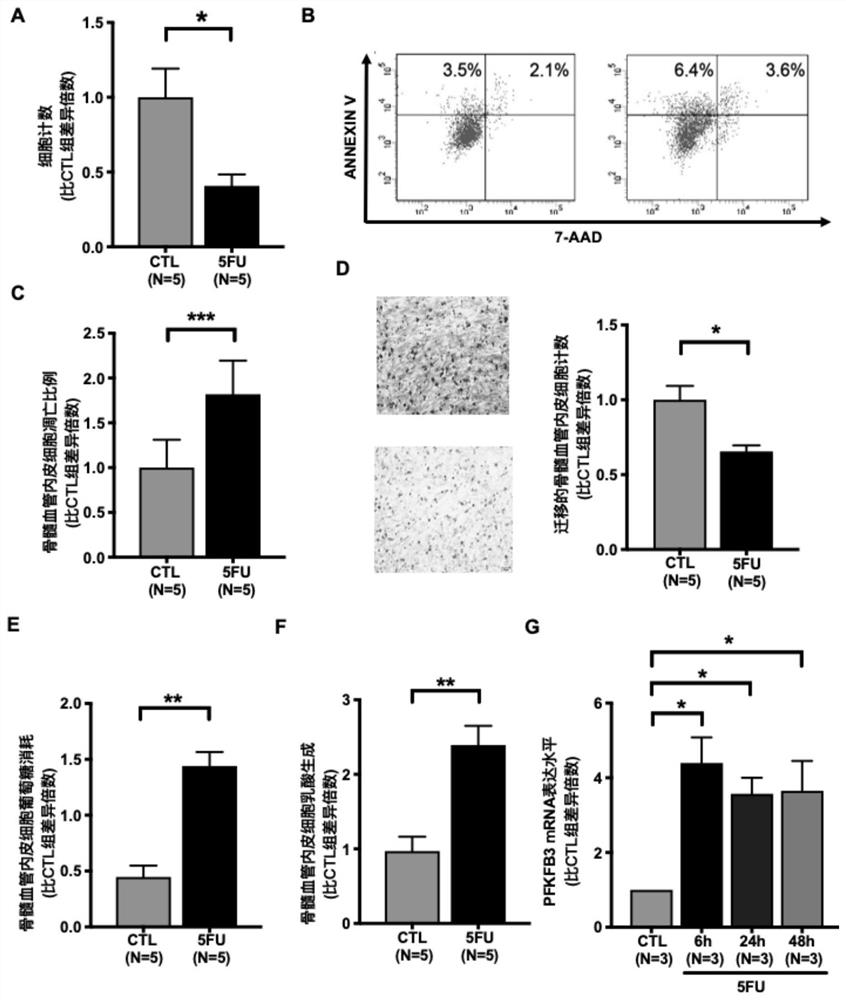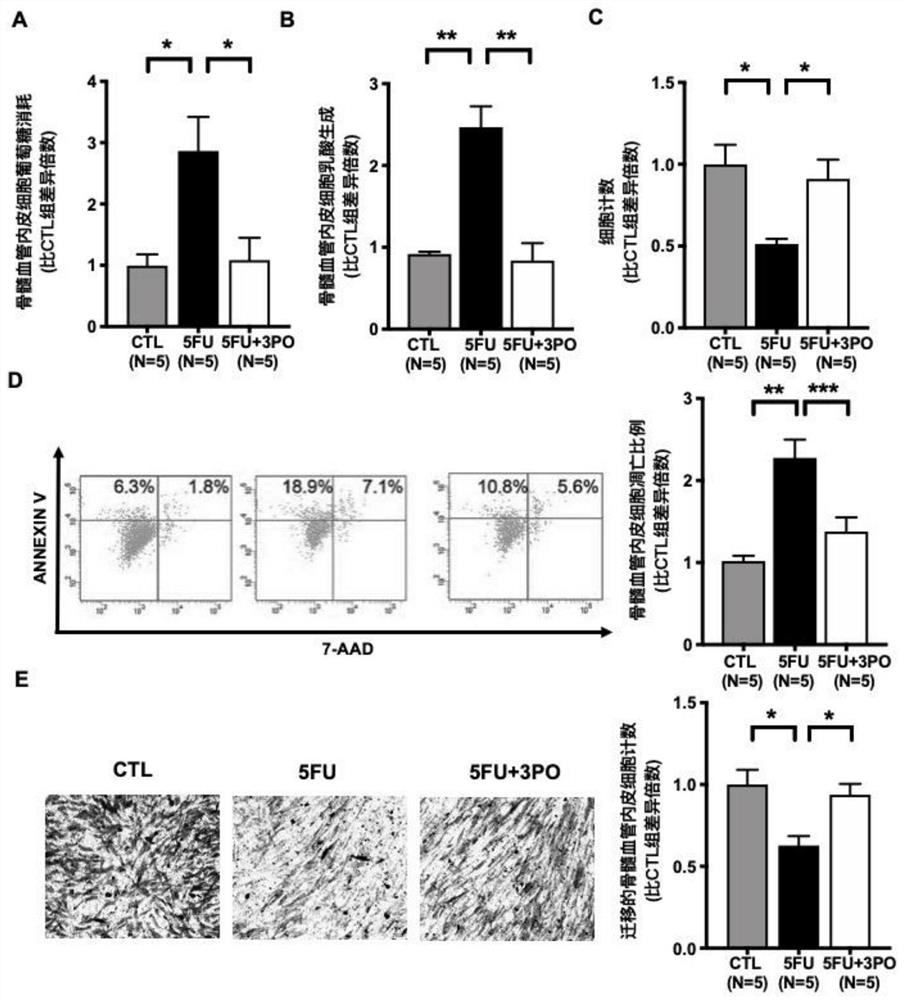Glycolysis inhibitor and application thereof to repair of damage of endothelial cells
A glycolysis and cell technology, applied in the repair of endothelial cell damage, in the field of glycolysis inhibitors, to reduce the risk of treatment failure, improve prognosis, and reduce mortality
- Summary
- Abstract
- Description
- Claims
- Application Information
AI Technical Summary
Problems solved by technology
Method used
Image
Examples
Embodiment 1
[0060] Example 1: Detecting the expression of glycolysis-related proteins in bone marrow vascular endothelial cells of patients with poor engraftment function after transplantation
[0061] In order to verify whether abnormal glycolysis is involved in the occurrence of poor engraftment after transplantation, this study used flow sorting ( figure 1 A) Transcriptome sequencing analysis of bone marrow vascular endothelial cells in patients with poor engraftment function and good engraftment function after transplantation combined with micro-library construction. The results showed that, compared with patients with good engraftment function after transplantation, glycolysis-related genes (such as SLC2A3 , HK1, HK2, HK3, PFKFB2, PFKFB3, PFKFB4, etc.) were significantly increased in bone marrow endothelial cells of patients with poor engraftment after transplantation ( figure 1 B). Subsequently, the inventors conducted a prospective clinical paired study to measure the protein expr...
Embodiment 2
[0062] Example 2: In vitro experiments show abnormal glycolysis in damaged bone marrow vascular endothelial cells
[0063] In order to further study the changes of function and glycolysis level of human bone marrow vascular endothelial cells before and after injury, the present inventors constructed an in vitro injury model of human bone marrow vascular endothelial cells by treating with chemotherapeutic drug 5-FU. The inventor's experiments found that after the chemotherapeutic drug 5-FU was processed, the cell number of human bone marrow vascular endothelial cells was significantly reduced ( figure 2 A), significantly increased apoptosis ( figure 2 B and 2C), the migration ability was weakened ( figure 2 D). Simultaneously, the inventor also found that the consumption of glucose in injured human bone marrow vascular endothelial cells ( figure 2 E) and lactic acid production ( figure 2 F) Significantly increased and increased expression of glycolysis-related genes (g...
Embodiment 3
[0064] Example 3: In vitro experiments show that glycolysis inhibitors can reduce the damage of human bone marrow vascular endothelial cells
[0065] Glycolysis inhibitor 3PO (10μM) can reduce the abnormally increased sugar consumption and lactic acid production of bone marrow vascular endothelial cells caused by chemotherapeutics (5-FU) treatment injury ( image 3 A and 3B) to restore it to the level close to that of the (dimethyl sulfoxide) group (control group, also denoted as CTL group). In addition, the number of cells in the 3PO treatment group was significantly increased compared with the 5-FU group ( image 3 C). At the same time, compared with the 5-FU group, the apoptotic ratio of bone marrow vascular endothelial cells was significantly reduced in the 3PO group ( image 3 D). Moreover, compared with the 5-FU group, the migration ability of the 3PO group was significantly increased ( image 3 E).
PUM
 Login to View More
Login to View More Abstract
Description
Claims
Application Information
 Login to View More
Login to View More - R&D
- Intellectual Property
- Life Sciences
- Materials
- Tech Scout
- Unparalleled Data Quality
- Higher Quality Content
- 60% Fewer Hallucinations
Browse by: Latest US Patents, China's latest patents, Technical Efficacy Thesaurus, Application Domain, Technology Topic, Popular Technical Reports.
© 2025 PatSnap. All rights reserved.Legal|Privacy policy|Modern Slavery Act Transparency Statement|Sitemap|About US| Contact US: help@patsnap.com



